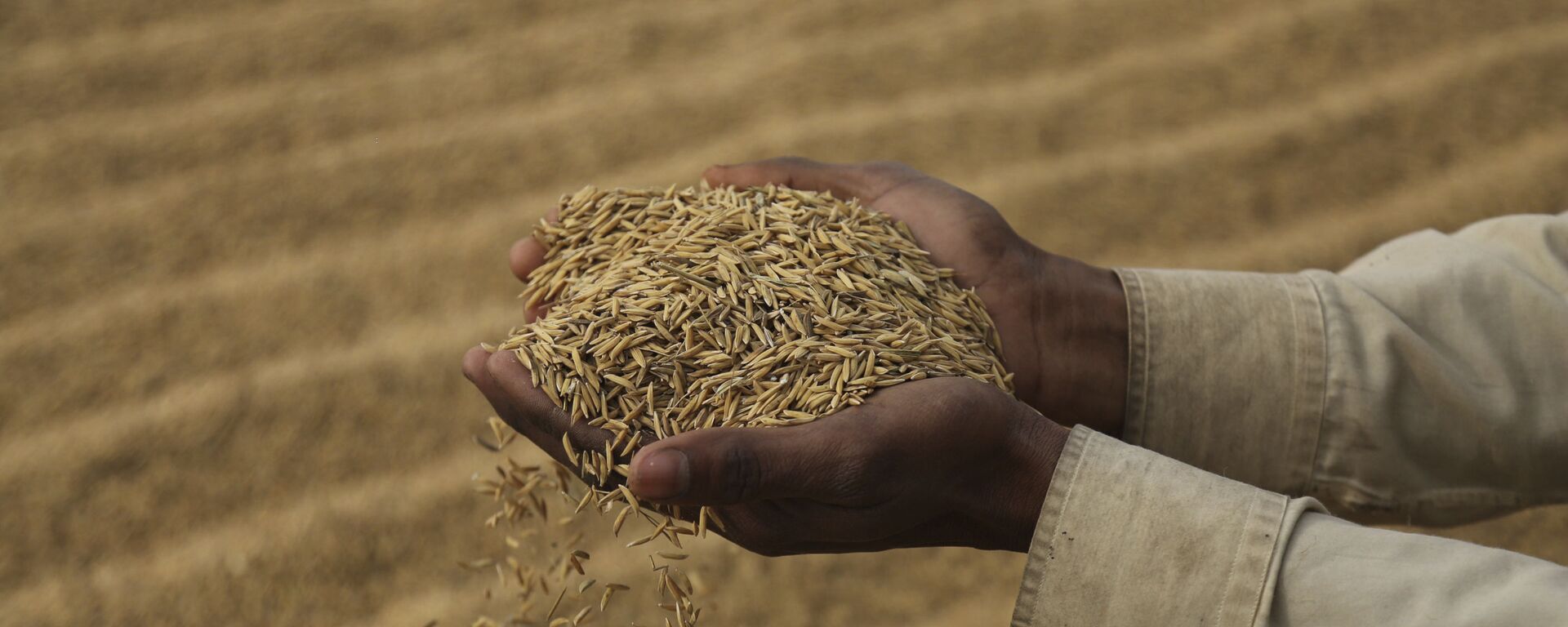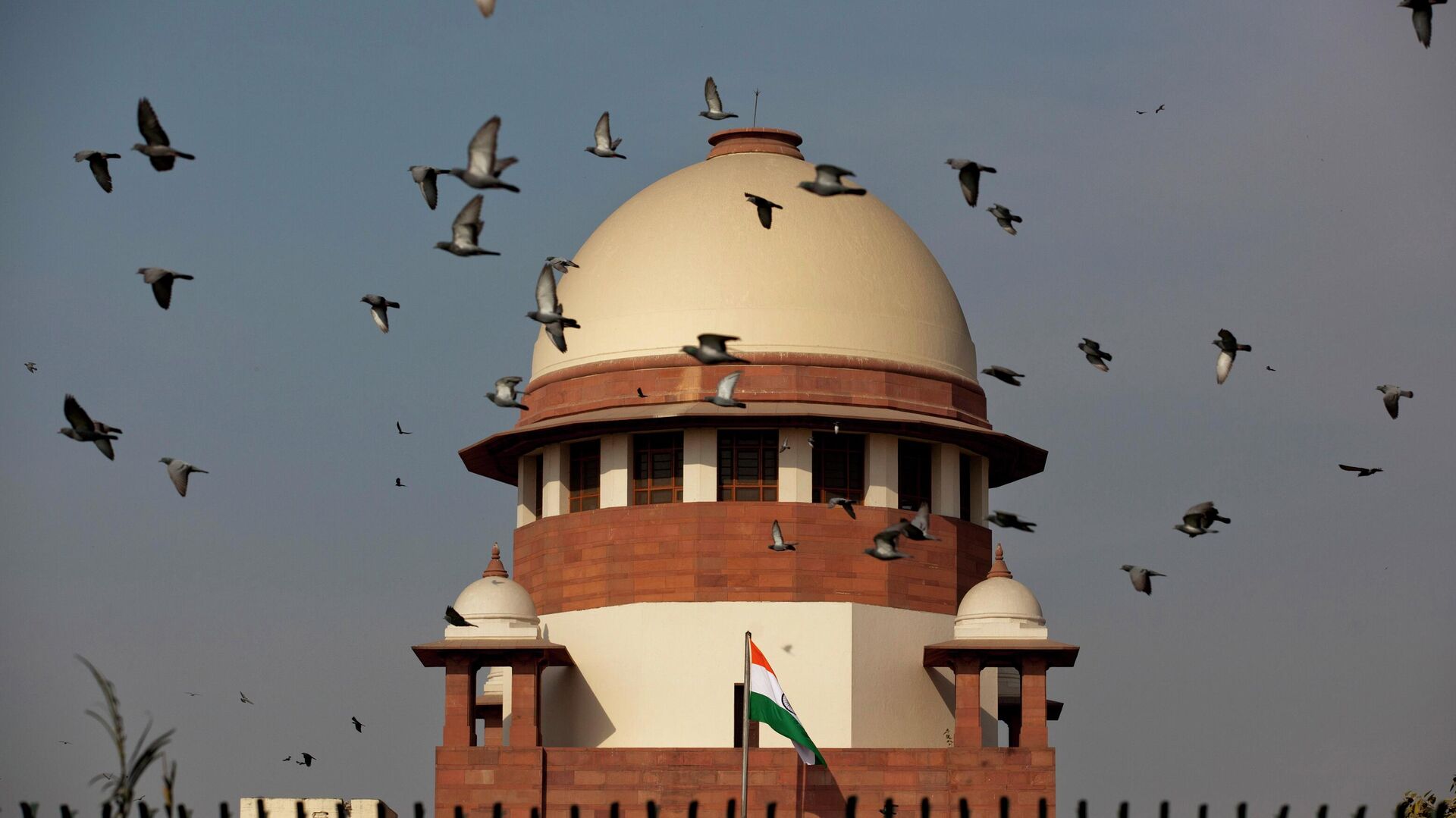https://sputnikglobe.com/20221107/big-win-for-modi-govt-as-supreme-court-of-india-clears-10-reservation-for-the-poor-1103846452.html
Big Win for Modi Gov't as Supreme Court of India Clears 10%-Reservation for the Poor
Big Win for Modi Gov't as Supreme Court of India Clears 10%-Reservation for the Poor
Sputnik International
Soon after the reservation for the poor was announced by the federal government, it was challenged as petitioners questioned how the quota could cross the 50... 07.11.2022, Sputnik International
2022-11-07T08:46+0000
2022-11-07T08:46+0000
2022-11-07T11:45+0000
india
supreme court of india
bharatiya janata party (bjp)
caste
politics
domestic politics
law
https://cdn1.img.sputnikglobe.com/img/07e6/0b/07/1103846858_0:148:3113:1899_1920x0_80_0_0_d74343b777d372b7679fcefdbf80a7c6.jpg
The Supreme Court of India on Monday upheld the federal government’s decision to introduce a new affirmative action plan setting aside 10 percent of college enrollment and government jobs for Economically Weaker Sections (EWS) of the population not already recognized as being from protected minorities.There are four broad categories of society recognized by the Indian government: Scheduled Caste (SC), scheduled Tribe (ST), Other Backward Class (OBC) and General Category, which includes the ‘upper’ castes. While hearing a number of petitions challenging the constitutional validity of the 103rd amendment to the Indian Constitution, the five-judge bench of Supreme Court said that the new plan does not violate the basic structure or Constitution of India.It further stated that the state's affirmative action program is designed to achieve a more egalitarian society: “It is also for the inclusion of any class or disadvantaged section.”Meanwhile, Justice Bhat said: "Economic destitution, economic backwardness is the backbone of this amendment and on this account, [this] amendment is constitutionally indefeasible. However, excluding classes such as Scheduled Caste/Scheduled Tribes, Other Backward Classes (OBC) is not constitutionally permissible."The case was presented first before the three judges but later it was referred to a larger five-judge bench in 2019. The court held a marathon six-and-half day hearing of the case and reserved its verdict earlier in September this year.As many as 40 petitions were heard by the Supreme Court against the decision. However, the move was not opposed by the opposition parties, including the Indian National Congress.
https://sputnikglobe.com/20220928/india-extends-free-food-program-for-800-million-until-december-amid-inflation-woes-1101311889.html
Sputnik International
feedback@sputniknews.com
+74956456601
MIA „Rosiya Segodnya“
2022
Rahul Trivedi
https://cdn1.img.sputnikglobe.com/img/07e5/05/12/1082926121_0:-1:627:627_100x100_80_0_0_d882e1a63f627c25b7a534fb8b8234d7.jpg
Rahul Trivedi
https://cdn1.img.sputnikglobe.com/img/07e5/05/12/1082926121_0:-1:627:627_100x100_80_0_0_d882e1a63f627c25b7a534fb8b8234d7.jpg
News
en_EN
Sputnik International
feedback@sputniknews.com
+74956456601
MIA „Rosiya Segodnya“
Sputnik International
feedback@sputniknews.com
+74956456601
MIA „Rosiya Segodnya“
Rahul Trivedi
https://cdn1.img.sputnikglobe.com/img/07e5/05/12/1082926121_0:-1:627:627_100x100_80_0_0_d882e1a63f627c25b7a534fb8b8234d7.jpg
india's supreme court, economically weaker sections, upper castes in india, backward class in india, indian constitution
india's supreme court, economically weaker sections, upper castes in india, backward class in india, indian constitution
Big Win for Modi Gov't as Supreme Court of India Clears 10%-Reservation for the Poor
08:46 GMT 07.11.2022 (Updated: 11:45 GMT 07.11.2022) Soon after the reservation for the poor was announced by the federal government, it was challenged as petitioners questioned how the quota could cross the 50 percent national cap on reservation set by the Supreme Court in 1992 and whether it changed the "basic structure" of the constitution.
The Supreme Court of India on Monday upheld the federal government’s decision to introduce a new affirmative action plan setting aside 10 percent of college enrollment and government jobs for Economically Weaker Sections (EWS) of the population not already recognized as being from protected minorities.
There are four broad categories of society recognized by the Indian government: Scheduled Caste (SC), scheduled Tribe (ST), Other Backward Class (OBC) and General Category, which includes the ‘upper’ castes.
As per the Indian Constitution, spots are reserved for the SC, ST and OBC segments of the population to ensure they have access to education, employment, government programs, etc. Before 2019, economically disadvantaged Indians from the general category weren't guaranteed quotas, but the federal government amended the Constitution to provide a 10 percent quota to EWS in this category.
While hearing a number of petitions challenging the constitutional validity of the 103rd amendment to the Indian Constitution, the five-judge bench of Supreme Court said that the new plan does not violate the basic structure or Constitution of India.

28 September 2022, 13:41 GMT
It further stated that the state's affirmative action program is designed to achieve a more egalitarian society: “It is also for the inclusion of any class or disadvantaged section.”
Meanwhile, Justice Bhat said: "Economic destitution, economic backwardness is the backbone of this amendment and on this account, [this] amendment is constitutionally indefeasible. However, excluding classes such as Scheduled Caste/Scheduled Tribes, Other Backward Classes (OBC) is not constitutionally permissible."
The case was presented first before the three judges but later it was referred to a larger five-judge bench in 2019. The court held a marathon six-and-half day hearing of the case and reserved its verdict earlier in September this year.
As many as 40 petitions were heard by the Supreme Court against the decision. However, the move was not opposed by the opposition parties, including the Indian National Congress.





